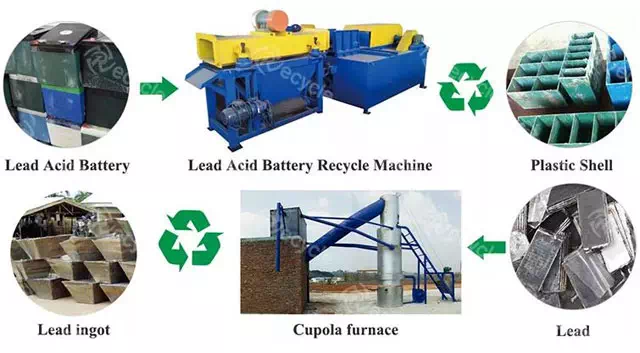News
The current situation and process of waste lead-acid battery recycling
Time:2022-12-10 15:46:53
As the application field of lead-acid battery is widened, cars, electric vehicles and communications are beginning to apply this type of battery, leading to the increasing demand for lead-acid batteries, further promoting the expansion of lead-acid battery production capacity and the continuous development of lead-acid battery production industry. With the rapid development of the lead-acid battery industry, the number of waste lead-acid batteries generated each year is large, and it is a heavy task to deal with these large and increasing lead-acid batteries, especially to treat them in an environmentally friendly way to reduce the pollution of the environment.

In the recycling technology of waste lead-acid batteries, the current method is the fire method, but the high temperature method not only requires high equipment requirements, but also generates dust easily in the process, so enterprises need to spend more money on equipment investment when using the fire method to treat waste lead-acid batteries.
The more promising wet process needs continuous improvement and development of technology due to the low processing efficiency, so as to improve the efficiency of the wet process for waste lead-acid batteries.
Waste lead-acid battery recycling technology is generally divided into three kinds: pyrometallurgical process, wet smelting process and solid phase electrolysis process.
1、Fire smelting process
Pyroprocessing of used lead-acid batteries mainly adopts reduction smelting. In addition to the reducing agent, melting agent can be added, such as iron filings, sodium carbonate, limestone, quartz and fluorite, etc.
2、Wet smelting process
The battery fragments obtained after the dismantling and pretreatment of waste lead-acid batteries are a mixture of metallic lead, lead oxide, lead salt and other metals such as copper, silver, arsenic, etc.
Wet metallurgy technology, also called electrolysis, selectively reduces all the lead compounds in the battery fragments to metallic lead with the help of electricity. Its main feature is that no waste gas or slag is produced during the smelting process and the recovery rate of lead can reach 95~97%.
The working principle of wet smelting technology is to add reducing agent in the solution, and the reducing agent in the lead reduction process can be used in the configuration of steel pickling wastewater to achieve the purpose of "treating waste with waste".
The solid phase electrolysis process uses aqueous sodium hydroxide solution as the electrolyte, and the cathode and anode are both made of stainless steel plates, and the solid phase lead compounds molecules in the lead paste are reduced to metallic lead by obtaining electrons from the surface of the cathode during electrolysis.
The above is a brief introduction to the current situation and process of waste lead-acid battery recycling. SUNY GROUP is a professional solid waste recycling equipment manufacturer, which can help customers to dismantle and refine lead in lead-acid battery recycling, and has rich experience in technical equipment, if you need, please contact us in time.
LATEST NEWS
CONTACT US
Tel: 0086-13674945231(whatsapp)
Email: sunymachine@gmail.com
Add: Henan Communication Industrial Park) 5th St., Economic-Technological Development Zone, Zhengzhou